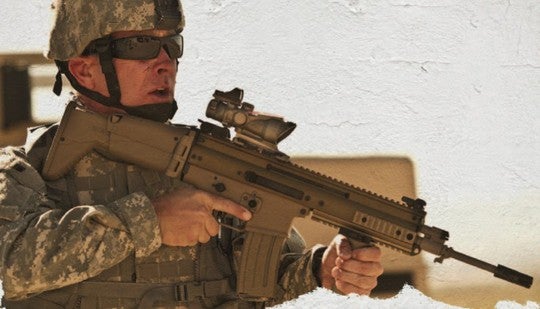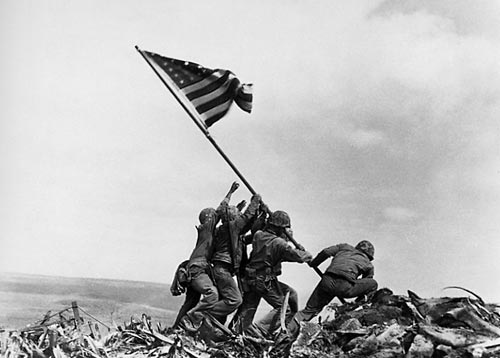Sun Ye Fei, “China Youth Daily” (February 17, 2012 09 Edition)
The U.S. Navy “Seal” commandos is one of the world’s most mysterious, the most deterrent effect of the special operations forces. The outside world few people know the “seal” commando mission where, where as a training base, however, this mysterious force is always in the countries most in need of their time. CFP for map
Recently, the U.S. special forces in the southern Somali pirate lair successfully rescued two the abduction of Western hostages, the U.S. military action there were no casualties. Involved in this action is the last in May killed, “al-Qaeda leader Osama bin Laden, the U.S. special forces ace – Navy SEAL commando unit.
Previously, although the U.S. military has said that major cuts in the military, but the deployment of unmanned aerial vehicle number and special forces ready to accept the increase. Department of Defense plans special forces increased to about 70,000 in 2015, the Pentagon said. Coupled with the U.S. media rumors, the garrison withdrew from Afghanistan in 2014, “Green Berets” and other U.S. special operations forces may have to stay in for the fight against anti-government armed and trained the Afghan forces. For a time, the U.S. special forces once again become the focus of media attention.
to strengthen the special operations and intelligence gathering to become the preferred way for the Obama administration to deal with global threats
Since the “9.11″, the U.S. anti-terrorism the name has launched a war in Afghanistan and the Iraq war, to a certain extent against terrorism momentum. However, these two wars is not fundamentally curb the malignant development of terrorism. On the contrary, in the United States and around the world, terrorist activities continue to appear, homeland security and overseas interests of the United States by a “serious threat”. Action on the ground invasion of Iraq and Afghanistan, but also led to a large number of human and material losses in the past 10 years.
contrast, the war in Afghanistan, U.S. special forces to gather intelligence, finding clues, and track the target, with the operations set a lot, played a major strategic role in the implementation of the war on terror. war in Iraq, the U.S. special forces advance into Iraq, expand information warfare, psychological warfare, media warfare, the U.S. military to fight for a greater initiative in the U.S. military to achieve smooth capture of Baghdad’s strategic objectives.
effectiveness is the eternal theme of the war. Control the scale of war, the process and rhythm has always been to combat the relentless pursuit of the objectives of the instructor. Information age, political, economic, diplomatic, and other factors, the war more and more to small, controlled the direction of development. Even first-class military power in the United States, but also hope that the war within a certain size and geographical order less warfare, precision warfare, speed war; in order to save the troops and weapons, save resources and reduce collateral damage injury, improve operational cost ratio. Therefore, the Americans felt that the special operations in the two wars in the past 10 years, the use of the field more widely, the role play is also growing.
recent years, the United States is indeed in actual combat tasted the sweetness of the special operations. In May last year, the sixth unit of the SEAL commando success hunting the world’s number one terrorist Osama bin Laden hiding in Pakistan has become famous, and the hostage rescue operations in Somalia, has also become the latest example of the force capabilities continue to improve. The Obama administration has pledged to build a small scale, flexibility and a strong army to launch a surgical anti-terrorist fight against the enemy to its knees. The successful use of the special forces precisely reflects this commitment, and special forces increasingly took to the stage of strategic planning by the U.S. government and military.
as the trump card of U.S. President Barack Obama in hostage rescue, high-profile praise the actions of the special forces, to take this to highlight the role of special operations forces. Precisely because of this, the U.S. Secretary of Defense Panetta has made it clear that will increase budgetary funds for special operations and intelligence gathering. U.S. military actions, they will rely more on a combination of intelligence and special operations to combat terrorism, rather than rely on a large number of ground troops to occupy large tracts of foreign territory.
conventional forces of special operations is bound to become an important trend of the U.S. military special operations forces to construct
U.S. Special Operations Command commander of the Pristina has pointed out that : “In today’s multi-polar world, special operations forces is the ideal tool for the implementation of U.S. security strategy.” To this end, the U.S. military’s senior decision-makers are always in the specific circumstances, for different operational objects, unusual unusual, difficult and perilous combat missions first given to the special operations forces, to play the role of the “Commando”, which makes the application greatly increase the scope of the special forces, special forces gradually by the “small groups” to “massive” direction.
In fact, early in 2006, issued by the U.S. Department of Defense, “Quadrennial Defense Review Report”, was the future U.S. military strategy to develop the four main objectives: to combat terrorist extremism, defending the United States exert influence on some of the country in a “strategic crossroads” and to prevent the so-called “rogue states” to acquire nuclear weapons and chemical and biological weapons.
with the implementation of these four strategic objectives, the report for the upgrading of the U.S. Armed Forces ability to carry out “unconventional warfare” and to strengthen efforts to combat terrorism, an extremely important proposal – comprehensive expansion of Special Forces.
At present, the U.S. Special Operations Command, also acknowledged that U.S. special forces a rapid increase in strength is the speed of a battalion a year, but still unable to meet the needs in Afghanistan and elsewhere. In fact, since the “9.11″ terrorist attacks, the Pentagon has been steadily expanded the highest level of U.S. military training, special operations forces of the most destructive. These forces include the Navy SEAL commandos, troops of the Army’s “Green Berets” and all kinds of special forces in the Air Force and Marine Corps.
of course, training special forces need to have excellent psychological quality and rich combat experience in a certain period, not overnight, is often the cream of the crop, cultivate a longer period. Therefore, the special forces in the army, the relatively small proportion. U.S. military in the development of special operations forces, but also affect the recruitment of less than enough qualified candidates for the military expansion process, the personnel recruited by only 1/4 to 2/3 through a rigorous selection process.
However, with the U.S. Special Operations status of a significant upgrade and special operations task continues to expand, in order to solve the current special operations task increased with the contradiction between the lack of special operations forces, conventional forces, special operations in has become the inevitable trend of the U.S. Special Operations forces to construct and shortcuts.
privilege forces lead to the dissatisfaction of the other military services and intelligence services
According to U.S. media reports, U.S. special forces to enhance the status and privileges of ownership and pull Williams Field, the former defense minister is inseparable. Rumsfeld believes that the key to the future of war lies in three factors, the air strikes, the light infantry and special forces, special forces role is particularly important, so special forces have some of the privileges is very natural.
some ways, in the Rumsfeld era, the U.S. special forces is growing fast, the power continues to expand. Deliberately under the care of the U.S. Department of Defense, along with the continuous development of the U.S. war on terror, the U.S. special forces have been gradually given the important task of the global fight against terrorist organizations. Therefore, the special forces expansion of affirmative action has become increasingly intense, and more “maverick”.
example, the Pentagon had sought a Global Counter-Terrorism Plan to allow the Special Operations Command to bypass the U.S. ambassadors sent directly into the host country to carry out secret military operations. Pentagon wants to wipe out terrorists when through the U.S. special forces to take more decisive and quick action to resolve the fighting, whether it should not all inter-agency joint action laborious discussion. In other words, the U.S. military and foreign embassies in close cooperation, but does not completely obey the command of the latter. This idea was the clear opposition of the U.S. State Department and CIA, as this will result in these two institutions in the traditional sense of the foreign command the U.S. military aerial.
In this regard, U.S. military officials believe that the deeper purpose of the dominant ideology of the Department of Defense, to further expand the intelligence gathering function of the U.S. Special Forces, so that the overall responsibility on a global scale enforcement actions against the important task of the terrorist organization, to meet the strategic needs of the new era the United States.
special forces much “pet” to a certain extent, led to the dissatisfaction of the other services of the U.S. military and intelligence agencies. U.S. Central Intelligence Agency and other intelligence agencies are very critical of U.S. special forces such “agents” color. They believe that the actions of special forces, is nothing short from the U.S. State Department and CIA “mouth wins food”.
special forces out non-formal operations, compared with conventional warfare, they are still in the supplement, with the status
special operations in order to achieve the country’s political, economic purpose or special purpose to achieve strategic, operational and combat and special operations forces or special operations forces, the temporary formation of enemy non-regular military operations. In this sense, the target of special operations to combat the battle and even the strategic objectives, it is not superimposed step by step through all levels of operations to complete the task, but a special means of warfare, and even through the first combat action, entered into a strategic, campaign purpose , play a formal military action is difficult to play a special role. Therefore, it was vividly called special operations to strategic decision-making, battle command, tactical operations.
Special Operations uniqueness and strength of the limited nature itself determine the informality of their actions. If it uses the formal combat operations, it is impossible to achieve a specific objective of the operation. However, due to the special forces out non-formal operations is to assist the positive battlefield, played the role of the positive battlefield doubling of highly flexible, which makes the special forces, no heavy weapons and armor protection, can not be fully used for the positive war. Form of organization from the point of view, the special forces are based on the grouping of teams to take the verified target to guide the attack, to seize the main points of clear Candi, assassinations, destruction, subverted the means of psychological warfare, covert operations, the only way to play the advantages of Special Forces.
In addition, in the conventional forces carry out combat missions, both regular warfare, but also irregular warfare. In other words, different levels, different levels of conventional warfare, there are some special operations such as reconnaissance, attack, ambush, seize control and so on. These actions, usually by conventional combat forces reconnaissance units or temporary attack units of marshalling implementation.
special operations in large part from the special operations in the past conventional warfare. However, when a specialized grouping of special operations forces after the implementation of special operations, special operations special operations and conventional operations there is a clear distinction, including the purpose and tasks of the core operations. Conventional operations, special operations aimed at with conventional warfare, the task is to direct a battle or combat service. Special operations may sometimes be combined with conventional combat, and sometimes not with the conventional warfare, but for the specific purpose of the countries some of the political, economic services. In line with conventional warfare, usually responsible for conventional combat forces should not be difficult to complete special tasks. For example, the U.S. military all kinds of special operations forces in action in the wars in Afghanistan and Iraq.
Overall, special operations forces is the military elite collection of the use of more and more areas, more and more to play the role. However, its role is still with the positive battlefield, can not completely replace conventional warfare, although in some cases may also become a major combat operations, but compared to conventional warfare, and always in the supplement, with the position.









